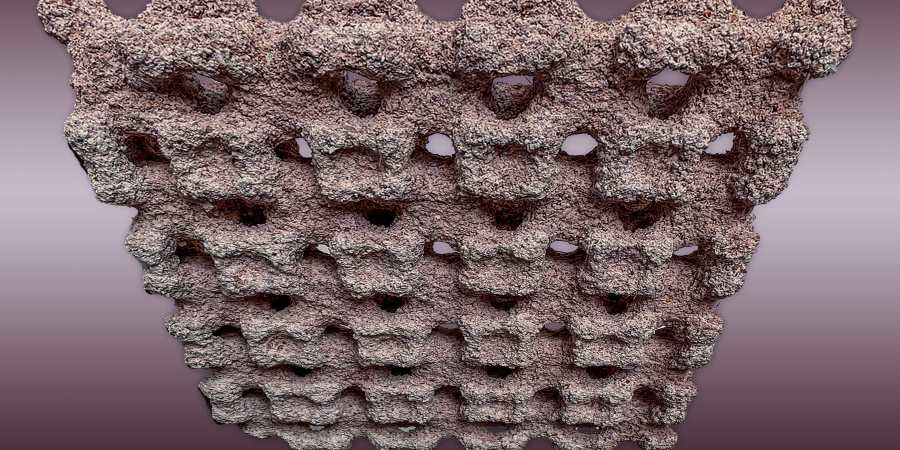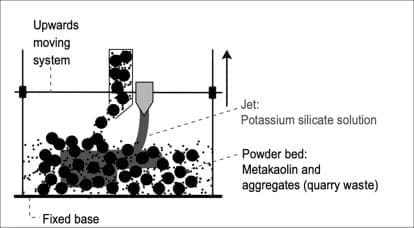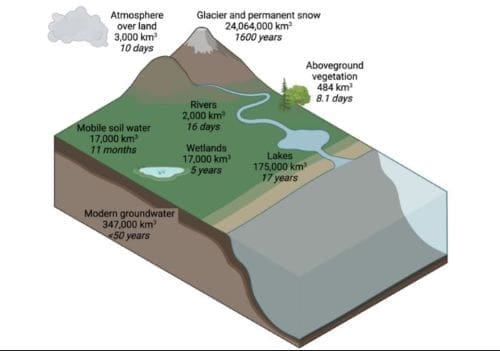In Brief:
Lower access to air conditioning may increase need for emergency care for wildfire smoke exposure
BUSPH – As Los Angeles County battles the most destructive wildfires in its history, a new study suggest that US policies should prioritize equity and education regarding the measures people can take to protect themselves from the harmful pollutants in wildfire smoke.
People who have limited access to air conditioning may be at higher risk of seeking emergency care for health problems following exposure to wildfire smoke, according to a new study led by Boston University School of Public Health (BUSPH).

Posted online ahead of publication in the journal Environmental Research: Health, the study found that exposure to fine particle matter (PM2.5) from wildfire smoke in California is associated with higher rates of emergency department visits for all causes, non-accidental causes, and respiratory disease. This risk varied by age and race, but was especially high for individuals who lived in areas with lower availability of air conditioning.
The findings come at a critical time, as firefighters in Southern California continue to battle multiple wildfires that have been blazing in and around Los Angeles County since Tuesday, January 7 — including the Palisades fire, which is likely the largest and most destructive wildfire in the county’s history.
Health experts are urging residents who are not under evacuation orders and can safely remain in their homes to turn on air conditioners and/or air purifiers if they have access to these devices.
Despite this guidance — and the growing threat of more frequent and intense wildfires due to worsening climate change — very little research has examined how the health effects of wildfire smoke exposure may differ based on individuals’ access to air conditioning.
Understanding this relationship can inform policies and interventions that mitigate barriers to air conditioners and protect vulnerable populations from the consequences of inhaling PM2.5 and other harmful pollutants from this smoke, which can permeate the air from hundreds or thousands of miles away.
“Depending on the type of system and filter used, air conditioning may modify the impact of smoke exposure on human health,” says study lead and corresponding author Dr. Jennifer Stowell, research scientist in climate and health at BUSPH, noting that the analysis only addressed the likelihood of access to air conditioning, rather than air conditioning types or actual usage. “Studies like these will become more and more relevant as wildfire exposure increases. California is, perhaps, the best example of this in the US, with bigger fires and longer fire seasons. An important next step will be to identify ways to better characterize access to air conditioning.”
For the study, Dr. Stowell and colleagues from BUSPH, Boston University College of Arts & Sciences (CAS), and the Health Effects Institute utilized a nationwide dataset of healthcare claims to assess more than 50,000 emergency department visits during the 2012-2019 California wildfire seasons, which occurred from May to November each year. They quantified the adverse health effects from PM2.5 exposure among all study participants, as well as subgroups of participants.
Consistent with prior research, wildfire smoke exposure was most strongly associated with emergency department visits for respiratory issues, but not cardiovascular-related complications. These visits were generally higher among children under 10 years old, adults between 20-74 years old, and among the Black population, although also elevated among White, Hispanic, and Asian/Pacific Islander populations.
People living in areas with lower availability of air conditioning had a 22-percent greater risk of visiting the emergency department for respiratory conditions associated with wildfire smoke exposure. Greater insight into air conditioning use as a pollutant-filtering tool and the barriers that certain populations face in accessing these cooling systems is critical, as wildfires are expected to occur more regularly in the Wildland-Urban Interface (WUI) — areas where human activity is in close contact with sources of dry fuel.
This is exactly what is happening now in LA County, Dr. Stowell says, as the fires destroy thousands of homes and businesses near vegetation.
“WUI fires are particularly concerning due to the burning of manmade structures and the additional toxic chemicals and particulates that can be found in their smoke plume,” says Dr. Stowell. “The current fires in LA are out-of-season fires driven by severe Santa Ana winds coming from the mountains. As climate change continues, the temperature differentials between land and sea will grow and, potentially, drive stronger and stronger late-season or out-of-season wind events.”
So how may residential air conditioners help dispel PM2.5 from homes? The filters in these cooling systems can remove particulate matter, although certain filters are more effective at filtering particulate matter than others.
“HEPA filters can remove the majority of particles greater than 0.3 µm, but they are significantly more expensive than fiberglass air filters, which only remove larger particles and may allow high amounts of fine particulate matter to penetrate indoors,” Dr. Stowell says. “Generic pleated air filters are also fairly efficient at filtering out most particulate matter.”
Air conditioning systems with a Minimum Efficiency Reporting Value (MERV) rating of seven or higher are thought to be the most efficient at removing particulate matter from outdoor air, but are also more expensive.
The study findings indicate a need for stronger policy measures that can reduce the health risks associated with wildfire smoke exposure.
“Many homeowners do not understand the differences between MERV ratings and how these might impact your health,” Dr. Stowell says. “Policymakers should consider delivering better information to the public — such as the types and ratings of filters that perform better — especially for those who reside in smoke-prone regions.”
Given that marginalized populations appear to be disproportionately burdened by the health effects of wildfire smoke exposure, economic assistance should also be considered, she says, particularly for low-income populations residing in smoke-prone regions. “Considering the current fires in CA, local and state governments should heighten their responses to these events and develop plans and policies to reduce exposure before the fires occur,” Dr. Stowell says.
The study’s senior author is Dr. Gregory Wellenius, professor of environmental health and director of the Center for Climate and Health at BUSPH. The study was coauthored by Dr. Ian Sue Wing, professor of earth and environment at CAS; Dr. Yasmin Romitti, staff scientist at the Health Effects Institute, and Dr. Patrick Kinney, Beverly Brown Professor of Urban Health at BUSPH.
Journal Reference:
Jennifer D Stowell et al. ‘Emergency department visits in California associated with wildfire PM2.5: differing risk across individuals and communities’, Environmental Research: Health 3, (1): 015002 (2025). DOI: 10.1088/2752-5309/ad976d
Article Source:
Press Release/Material by Boston University School of Public Health (BUSPH)
Climate fee on food could effectively cut greenhouse gas emissions in agriculture while ensuring a social balance
PIK – Greenhouse gas emissions in German agriculture could be significantly reduced in a socially equitable way through a climate fee on food, combined with climate dividends.

This is the key finding of a study by the Potsdam Institute for Climate Impact Research (PIK).
The study suggests that pricing greenhouse gas-intensive foods could help meet climate targets for agriculture while generating over 8.2 billion Euros annually. If these funds were redistributed to households through a lump-sum compensation scheme, it would ease the financial burden on households, especially those with lower incomes and at the same time encourage sustainable consumption.
Agriculture accounts for 8 percent of all greenhouse gas (GHG) emissions in Germany.
“However, emissions within this sector, could be reduced by 22.5 percent or over 15 million tonnes of GHG annually, if the social cost of carbon were reflected in food prices,” says Julian Schaper, guest scientist at PIK and lead author of the study published in the journal Food Policy. In the Federal Climate Change Act passed in 2019, the government set itself the goal of reducing annual emissions from the current 62 million tonnes to 56 Mt GHG by 2030.
The social cost of carbon is an estimate of the economic damages that would result from emitting one additional tonne of carbon into the atmosphere in the future. Emission-intensive products such as meat and dairy would be most affected by such a climate fee of around 200 euros per tonne GHG, while prices for more sustainable products would rise less: Yoghurt and milk would increase by about 25 cents per kilogram, while beef prices could rise by over 4 euros/kg.
Using a demand model that provides a detailed and representative picture of how German households respond to price changes, the researchers assessed the effects of GHG pricing on consumption and associated emissions.
“Households would tend to buy more food that is less carbon-intensive on average, such as vegetables. A climate fee would not only directly benefit climate protection, but could also encourage sustainable consumption,” explains PIK scientist Max Franks, author of the study.
In the researchers’ model, the 8.2 billion euros generated by the climate fee are returned to consumers as a climate dividend, providing substantial relief to lower-income households, while wealthier households would bear slightly higher costs. “This form of redistribution helps to create a social balance that can promote the acceptance of such measures,” Franks continues.
The authors of the study also see significant potential for broad public acceptance in the combination of a climate fee and dividend. It is crucial to clearly communicate that the measures effectively reduce emissions, that all revenues are returned to the public and that lower-income households are specifically supported.
Journal Reference:
Julian Schaper, Max Franks, Nicolas Koch, Charlotte Plinke, Michael Sureth, ‘On the emission and distributional effects of a CO2eq-tax on agricultural goods – The case of Germany’, Food Policy 130, 102794 (2025). DOI: 10.1016/j.foodpol.2024.102794
Article Source:
Press Release/Material by Potsdam Institute for Climate Impact Research (PIK)
New data on atmosphere from Earth to the edge of space
University of Tokyo – A team led by researchers at the University of Tokyo have created a dataset of the whole atmosphere, enabling new research to be conducted on previously difficult-to-study regions.
Using a new data-assimilation system called JAGUAR-DAS, which combines numerical modeling with observational data, the team created a nearly 20-yearlong set of data spanning multiple levels of the atmosphere from ground level up to the lower edges of space.
Being able to study the interactions of these layers vertically and around the globe could improve climate modeling and seasonal weather forecasting. There is also potential for interdisciplinary research between atmospheric scientists and space scientists, to investigate the interplay between space and our atmosphere and how it affects us on Earth.
The study was published in Progress in Earth and Planetary Science.

Complaining about the weather, and about weather forecasters when they get things wrong, is a popular pastime for many. But a meteorologist’s job is not easy. Our atmosphere is multilayered, interconnected and complex, and global climate change is making it even harder to forecast both long-term and sudden, extreme weather events.
To help overcome these increasing challenges, researchers have created a dataset of the entire atmosphere. Ranging from September 2004 to December 2023, it spans multiple levels of the atmosphere from ground level up to the lower edge of space, about 110 kilometers above Earth’s surface.
The region between about 50 km to 110 km (though exact ranges vary) is particularly of interest, as it is so notoriously difficult to study that it had previously been dubbed the “ignorosphere.” This region is too low for satellites and too high for weather balloons to observe, resulting in a shortage of data and consequently research. However, it is a fascinating area, characterized by vast global atmospheric tides and small-scale gravity waves which affect wind and temperature. It also plays an important role in the intensity of the impact of space weather events.
“The JAWARA (JAGUAR-DAS Whole neutral Atmosphere Reanalysis) dataset is a strong research tool which, for the first time, makes it possible to quantitatively understand atmospheric general circulation and the hierarchal structure of waves and vorticies in the mesospheric layer (which is above the stratosphere and about 50-90 km above Earth’s surface) and lower thermospheric layer (about 90-110 km above Earth’s surface) of the atmosphere, including the ignorosphere,” explained Professor Kaoru Sato from the University of Tokyo. “If we can better understand these layers, it would improve our ability to respond to climate change, extend the lead time of seasonal forecasts and advance our understanding of space weather phenomena.”
The team developed its new JAGUAR-DAS high-speed data assimilation system as part of an international project led by Sato. The system integrates observational data into a numerical model which can then produce data on atmospheric conditions. The resulting dataset, named JAWARA, makes it possible to perform detailed analysis of the general circulation of the atmosphere and its hierarchical structure.
“Atmospheric general circulation models which range up to the lower edge of space have only been developed by a limited number of research institutions around the world, including our own,” said Sato. “Recent studies indicate that extreme stratospheric phenomena can start at least in the upper mesosphere. Therefore, quantitative elucidation of phenomena in the mesosphere and lower thermosphere is extremely important for weather forecasting.”
The dataset is now openly available, and the team intends to use it to study the large-scale circulation and the hierarchical structure in the atmosphere, as well as vertical and interhemispheric (i.e., between the Northern and Southern hemisphere) couplings.
They also hope to work in collaboration with space scientists to study the interactions between the atmosphere and space, particularly the mesosphere (where the highest clouds form) and ionosphere (located within the thermosphere and about 60-300 km above Earth’s surface, where many satellites are based).
Journal Reference:
Koshin, D., Sato, K., Watanabe, S., Miyazaki, K., ‘The JAGUAR-DAS whole neutral atmosphere reanalysis: JAWARA’, Progress in Earth and Planetary Science 12, 1 (2025). DOI: 10.1186/s40645-024-00674-3
Article Source:
Press Release/Material by University of Tokyo
Sustainable building components create a good indoor climate
ETH Zurich – Whether it’s the meeting room of an office building, the exhibition room of a museum or the waiting area of a government office, many people gather in such places, and quickly the air becomes thick. This is partly due to the increased humidity.
Ventilation systems are commonly used in office and administrative buildings to dehumidify rooms and ensure a comfortable atmosphere. Mechanical dehumidification works reliably, but it costs energy and – depending on the electricity used – has a negative climate impact.
Against this backdrop, a team of researchers from ETH Zurich investigated a new approach to passive dehumidification of indoor spaces. Passive, in this context, means that high humidity is absorbed by walls and ceilings and temporarily stored there. Rather than being released into the environment by a mechanical ventilation system, the moisture is temporarily stored in a hygroscopic, moisture-binding material and later released when the room is ventilated.
“Our solution is suitable for high-traffic spaces for which the ventilation systems already in place are insufficient,” says Guillaume Habert, Professor for Sustainable Construction, who supervised the ETH research project.

The study was published in Nature Communications.
Waste material from marble quarrying
Habert and his research team followed the principle of the circular economy in their search for a suitable hygroscopic material. The starting point is finely ground waste from marble quarries. A binder is needed to turn this powder into moisture-binding wall and ceiling components. This task is performed by a geopolymer, a class of materials consisting of metakaolin (known from porcelain production) and an alkaline solution (potassium silicate and water).
The alkaline solution activates the metakaolin and provides a geopolymer binder that binds the marble powder to form a solid building material. The geopolymer binder is comparable to cement but emits less CO2 during its production.
In the ETH project, the scientists succeeded in producing a prototype of a wall and ceiling component measuring 20 × 20 cm and 4 cm thick. Production was carried out using 3D printing in a group led by Benjamin Dillenburger, Professor for Digital Building Technologies. In this process, the marble powder is applied in layers and glued by the geopolymer binder (binder jet printing technology).
“This process enables the efficient production of components in a wide variety of shapes,” says Benjamin Dillenburger.
Moisture-controlling components increase comfort
Combining geopolymer and 3D printing to produce a moisture reservoir is an innovative approach to sustainable construction. Building physicist Magda Posani led the study of the material’s hygroscopic properties at ETH Zurich before recently taking on a professorship at Aalto University in Espoo, Finland. The project is based on the doctoral theses of materials scientist Vera Voney, supervised by Senior Research Associate Coralie Brumaud and architect Pietro Odaglia, who developed the material and the 3D printing machine at ETH.

“We were able to demonstrate with numerical simulations that the building components can significantly reduce humidity in heavily used indoor spaces,” says Posani, summarising the main result of the research project.
For the simulation, it was assumed that the walls and ceiling of a reading room used by 15 people in a public library in Oporto, Portugal had been completely lined with hygroscopic components. Magda Posani calculated how often and to what extent the humidity exceeded the comfort zone, i.e. 40 to 60 percent relative humidity in this virtual reading room over the course of a year.
From this, she calculated a discomfort index, a figure that expresses the loss of comfort caused by excessively high or low humidity. If the reading room were fitted with the moisture-binding components, the discomfort index could be reduced by 75 percent compared to a conventional painted wall. If components were used that were 5 cm thick instead of just 4 cm, the discomfort index fell by as much as 85 percent.
More climate-friendly than ventilation systems
The hygroscopic wall and ceiling components are climate-friendly, i.e. they cause significantly lower greenhouse gas emissions over a 30-year life cycle than a ventilation system that dehumidifies air quality to the same extent. In the simulation calculations, the wall and ceiling components were also compared with a clay plaster that has been used since time immemorial and also passively regulates the air humidity in indoor spaces. This old technique proved to be even more climate-friendly than the hygroscopic components. However, the plaster has a lower storage capacity for water vapour.
The research at ETH has shown that the combination of geopolymer and 3D printing can be used to produce wall and ceiling components for efficient moisture buffering. After this proof of concept, the technology is, in principle, ready to be further developed and scaled for industrial manufacture.
At the same time, research continues. In a project with Turin Polytechnic and Aalto University, ETH Zurich is working to produce wall and ceiling components with even lower greenhouse gas emissions. Because one thing is clear: if Switzerland wants to achieve its net zero target by 2050, it needs buildings that cause as little greenhouse gas emissions as possible during construction and use.
Journal Reference:
Posani, M, Voney, V, Odaglia, P, Du, Y, Komkova, A, Brumaud, C, Dillenburger, B, Habert, G., ‘Low-carbon indoor humidity regulation via 3D-printed superhygroscopic building components’, Nature Communications 16, 425 (2025). DOI: 10.1038/s41467-024-54944-1
Article Source:
Press Release/Material by ETH Zurich
New study from Chapman University reveals rapid return of water from ground to atmosphere through plants
Chapman University – A new study led by scientists in the Schmid College of Science and Technology at Chapman University provides the first comprehensive global estimates of the amount of water stored in Earth’s plants and the amount of time it takes for that water to flow through them.
The information is a missing piece of the puzzle in understanding the global water cycle and how that cycle is being altered by changes in land use and climate.

The study, published in the journal Nature Water, finds that Earth’s vegetation stores about 786 km3 of water, only about 0.002% of the total amount of freshwater stored on Earth.
The study also finds that the time it takes for water to flow through plants (referred to as transit or turnover time) and return to the atmosphere is among the fastest in the global water cycle, ranging from just five days in croplands to 18 days in evergreen needleleaf forests.
The transit of water through plants is particularly fast in croplands, grasslands and savannas. The results underscore vegetation’s dynamic role in the water cycle. In comparison to the global annual median of 8.1 days for water to transit through plants from entry to exit, the water in lakes is estimated to take 17 years, and the water in glaciers is estimated to take 1600 years.
“We have known for a long time that most of the water that returns from the ground to the atmosphere does so through plants, but until now, we did not really know how long it took for that water to transit through plants,” said the study’s lead author Dr. Andrew Felton, who carried out the work as part of a U.S. Department of Agriculture Fellowship while at Chapman University and is now a professor at Montana State University.
“Our results show that the transit of water through plants occurs on the order of days, rather than months, years, or centuries, as it does in other parts of the water cycle.”
The research team notes that by combining estimates of the transit of water through plants with the transit of water through the atmosphere (about 8-10 days) and the transit time of water through soil before being taken up by plants (about 60 to 90 days), they can begin to estimate the complete amount of time it takes for a drop of water to move through the terrestrial water cycle.
“Plants are the forgotten part of the global water cycle,” said Felton. “In many cases, plants are not even represented on water cycle diagrams, which is ironic because we already know they play this critical role in returning water from the ground to the atmosphere.”
To generate the estimates, the research team first calculated the amount of water stored in plants using data from NASA’s Soil Moisture Active Passive Mission (SMAP) satellite mission, which provided high-resolution estimates of the water in soils. The SMAP mission originally saw plants as interfering with the soil moisture measurements, and was correcting for their presence.
The Chapman researchers found those corrections actually held valuable information for understanding the water cycle. The team combined estimates of plant water storage with cutting-edge estimates of the rates at which water is leaving plants to determine the transit time of water through vegetation. The result was five years of monthly water storage and transit time estimates at a spatial resolution of 9 km2.
The research team also found that the transit time of water through vegetation varied considerably across different land cover types, climate and seasons. The transit time of water through croplands was significantly and consistently the fastest, with water transiting through plants in less than a day during the peak of the growing season.
“One important observation is that croplands around the world tend to have very similar and very fast transit times,” said Dr. Gregory Goldsmith, senior author and an associate professor of Biological Sciences at Chapman University. “This indicates that land use change may be homogenizing the global water cycle and contributing to its intensification by more rapidly recycling water back to the atmosphere where it can turn into heavy rain events.”
“The results suggest that the transit time of water through plants is likely to be very sensitive to events such as deforestation, drought and wildfire, which will fundamentally change the time it takes for water to flow through the water cycle,” Felton said.
Journal Reference:
Felton, A.J., Fisher, J.B., Hufkens, K., Goldsmith, G.R., et al. ‘Global estimates of the storage and transit time of water through vegetation’, Nature Water (2025). DOI: 10.1038/s44221-024-00365-9
Article Source:
Press Release/Material by Chapman University
Featured image credit: Gerd Altmann | Pixabay




